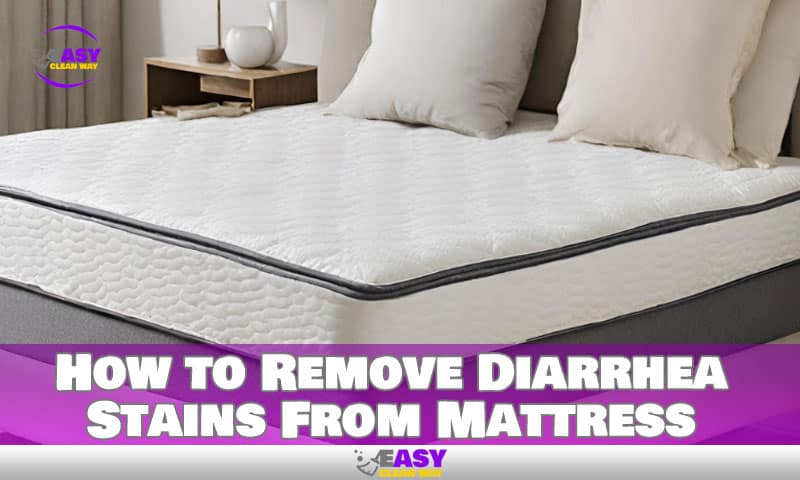
Cleaning stainless steel bathroom stalls is an important part of maintaining a safe and hygienic environment. It can be a challenge, though – stainless steel is notoriously difficult to clean and often shows signs of wear and tear or discoloration if not done properly.
Fortunately, there are several effective steps you can take to ensure that your stainless steel bathroom stalls look clean and shiny again. In this guide, we’ll discuss the best ways to clean your stalls for sparkling results every time.
We’ll start by talking about the most crucial elements of cleaning, like the necessity of sufficient ventilation and the value of donning safety gear. Next, we’ll go through which cleaning supplies work best for stainless steel surfaces and give comprehensive, step-by-step instructions on how to use them. Finally, we’ll offer some sound advice on how to keep your freshly cleaned surfaces looking great for a longer period of time.
What You’ll Need to Clean Stainless Steel Bathroom Stalls
Cleaning stainless steel bathroom stalls doesn’t have to be a burdensome task. All you need is the right supplies and a gentle touch to get the job done quickly and with optimal results.
For starters, you’ll need a mild detergent or an ammonia-based solution. Using warm water, mix the detergent or ammonia-based solution with it to make a cleaning solution. Be sure to use gloves when mixing these items together, as they may cause skin irritation if they come into direct contact with your skin.
Additionally, stay away from using bleach and abrasive cleaners on stainless steel bathroom fixtures since these substances might be too harsh and risk causing discoloration or other damage. Instead, choose cleaning chemicals made especially for stainless steel, like ones that contain phosphoric acid or citric acid.
How to Prep the Stall for Cleaning
It’s important to get the stainless steel stall ready for cleaning. First, make sure to remove any dust or debris that may be on the surface. It’s best to do this with a dry dust cloth before cleaning with detergent or ammonia-based solutions.
The directions on the cleaning product you are using for your stainless steel stall should then be carefully read. Use of a light detergent or an ammonia-based solution diluted in warm water is often advised.
Use a soft cloth and detergent while cleaning; after scrubbing the surface, rinse off any extra suds and residue. Avoid rinsing after using an ammonia-based solution; instead, simply wipe the surface with a dry towel until it is totally dry.
It is also important to note that bleach-based cleaners should be avoided for stainless steel toilet partitions as these can cause corrosion over time.
Best Practices for Cleaning Stainless Steel Bathroom Stalls
Cleaning stainless steel bathroom stalls can be a daunting task, but with the right tools and techniques, you can achieve sparkling results every time.
Mild Detergents or Ammonia-based Solutions
A mild detergent or an ammonia-based solution is the best option for general cleaning and everyday grime. Before applying any chemicals, make sure the space is properly ventilated. Apply the cleaning solution to the surface in circular motions after dipping a delicate cloth into it. Prior to rinsing with warm or hot water, let the cleaning agent finish its job. For optimal results, dry-wipe.
Bleach-Based Cleaners
Bleach should be avoided when cleaning stainless steel as this may cause discoloration due to corrosion. If you do need to use it, ensure that the surface is rinsed thoroughly after each application and wipe dry with a clean cloth. A better alternative would be to use specialized cleaners that are specifically designed for stainless steel surfaces.
What to Do When There’s Rust on the Stall
If your stainless steel bathroom stall has rust spots, you don’t have to panic. The appropriate cleaning method depends on the type of finish on the stainless steel – polished or satin.
Polished Finish
If there are rust spots on a polished stainless steel finish, Naval Jelly is an effective rust remover that won’t damage the surrounding metal. It’s important to ensure that the product is specifically designed for stainless steel; other kinds may contain chemicals that can damage it. After applying and leaving it for several minutes, simply rinse it off.
Satin Finish
For a satin finish stall, you’ll need a more gentle approach in order to avoid scratching the surface. A mild abrasive cleaner like Bon Ami, applied with a damp cloth, will break down rust without harming the metal surface. Once you’ve wiped away all the rust from your stall, rinse the area with clean water and dry with a cloth.
Finally, use a stainless steel cleaner to bring back its original shine and remove any dirt or grime buildup from daily wear and tear.
How to Shine Up Stainless Steel Afterwards
The process of cleaning stainless steel doesn’t end with removing the dirt and residues. You can take extra steps to give your bathroom stalls a brilliant shine that will make them look brand new.
Metal Cleaner
Using a metal cleaner specifically formulated for stainless steel surfaces is an effective way to give your bathroom stalls a glossy finish that will last. Make sure to apply the cleaner in circular motions and then buff off with a microfiber cloth for best results.
Abrasive Powder
If you’re dealing with stubborn mineral deposits, like soap scum, try using a slightly abrasive powder like Ajax to buff them away without scratching the surface. Make sure not to leave any residual powder behind after wiping; if necessary, use a damp cloth to get every last bit off.
Baking Soda
If you need to deal with any discoloration or rust on the stainless steel, baking soda is an excellent way to remove it without damage. Make a paste using baking soda and water and use a soft rag or sponge to gently rub it onto the surface of your bathroom stall; then rinse off with warm water for sparkling results!
FAQs About Cleaning Stainless Steel Bathroom Stalls
Cleaning stainless steel bathroom stalls can be a daunting task, but luckily there are a few tips and tricks to make the process easier and ensure sparkling results every time. To help you navigate the process, here are a few common questions about cleaning stainless steel stalls.
What Cleaning Solutions Can I Use?
When it comes to cleaning your stainless steel stall, you want to stay away from harsh chemicals. The best approach is to use a mild detergent or ammonia-based solution for light cleaning and scrubbing. For tougher jobs that require more muscle power, try a combination of mild dish-washing liquid soap or powdered detergent, ammonia and warm water.
Is There Anything Else I Should Do?
Once you’ve used your cleaning solution of choice, be sure to rinse off the surface with warm or hot water, wiping away any remaining grime in the process. Additionally, never forget to dry the stall with a microfiber cloth afterwards – allowing it to air dry could lead to water spots and other unsightly streaks.
People Also Like: How to Clean a Lever Action Rifle
Conclusion
Cleaning stainless steel bathroom stalls doesn’t have to be a daunting task. With the proper techniques and products, the process can be a breeze. To get the best results, start by giving the surface a quick dusting and then move on to a deeper cleaning with detergent and a cloth. Afterwards, use a polish that contains mineral oil to protect and shine the surface. Once the cleaning is done, it’s important to use a squeegee to remove excess moisture and detergent. If done correctly, you’ll be rewarded with sparkling results every time.
Hey there! I’m Wilfred Holguin, your Home Clean Expert blogger. I’m on a quest to help you conquer the clutter in your home and embrace the joys of a tidy home.




